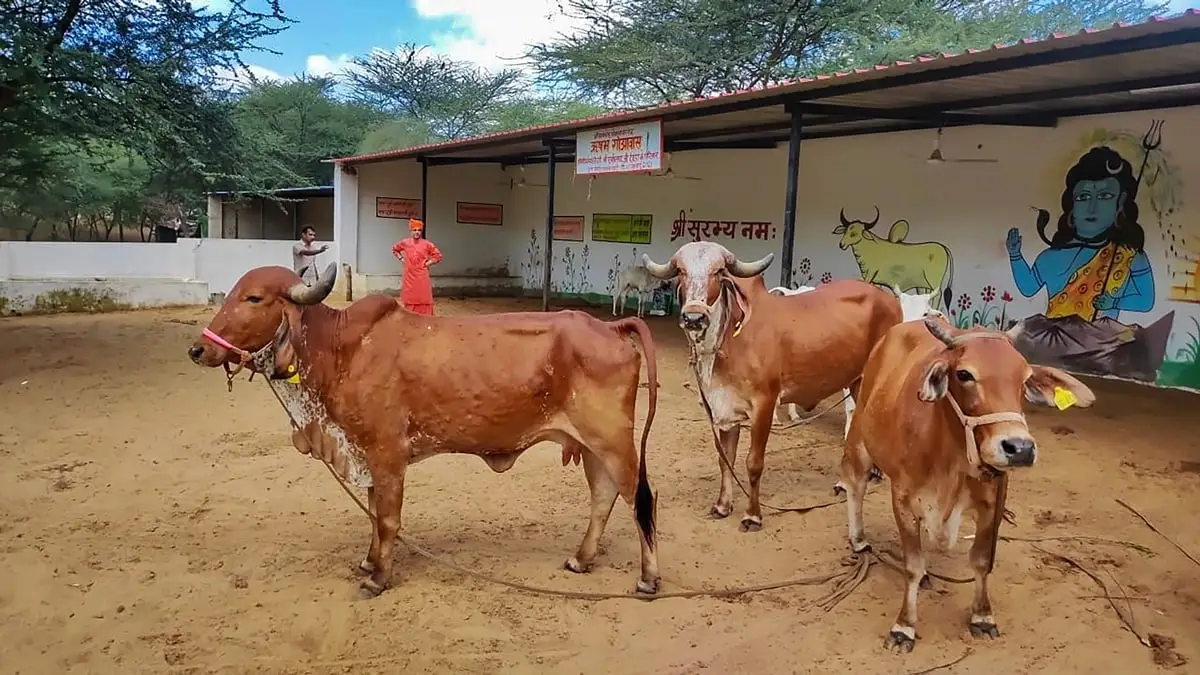Top Stories
- Know Everything About Nipah Virus, Which Is Back In Kerala Again
- Kevin Porter Jr Arrested On His Girlfriend’s Assault Charge
- Market Change Overnight - Know The 8 Things That Did It
- Who Are Alba Baptista And Chris Evans Married On The Weekend?
- Disrupted India vs Pakistan Asia Cup 2023 Match on Reserve Day
- 10 Common Foods That Contain No Calories or Are Very Low in Calories
- Men’s Styling Tips - Know the 9 Common Style Mistakes to Avoid
- Coco Gauff Beats Karoline Muchova and Reaches the US Open Final
- Danny Masterson Gets Life Sentence of 30 Years for Two Rapes
- Experience A Splendid Vacation in Kashmir with These 15 Gorgeous Sights
- India
- Saturday , July 27, 2024
- Last Published Sep 12, 2023, 6:48:32 PM

Lumpy Skin Disease: What Is the Viral Infection Killing Cattle in India?
Over the last few months, lumpy skin disease has been trending due to its deadly impacts on the lives of cattle in the country. Reportedly, the disease has taken around 85000 lives, with over 16.42 lakh active cases in various parts of the country. Among various regions, Rajasthan, with over 50,000 cases, has emerged as the country's hotspot for the viral infection’s outbreak. As the figures for the virulent outbreak are gradually rising, let’s see in detail the origin, symptoms, consequences, and other aspects of the virulent disease.
What Is Lumpy Skin Disease And How It Spreads?
Lumpy skin disease is a contagious vector-borne disease that spreads through vectors like mosquitoes, biting flies and ticks. The disease mainly affects host animals, like cows and buffaloes. LSD is caused due to the impact of the lumpy skin disease virus (LSDV), which belongs to the genus capripoxvirus. Capripoxvirus is a part of the poxviridae family, whose other members involve smallpox and monkeypox viruses. LSDV shares antigenic similarities with the sheeppox virus (SPPV) and the goatpox virus (GTPV). Although the virus belongs to the same family of poxviridae, it lags zoonotic disease properties, which means the virus does not impact humans. According to the United Nations Food and Agriculture Organization (UNFAO), infected animals shed the virus through oral and nasal secretions. This form of secretion results in the contamination of common feeding and water troughs. Thus, LSD spreads through vector biting or contaminated fodder and water. Certain studies also suggest that the virus can spread through semen collected during artificial insemination.Symptoms of Lumpy Skin Disease In Humans
As mentioned above that, the lumpy virus is not of zoonotic origin, so it does not affect humans. However, it has deadly characteristics for the cattle population because the virus affects the lymph nodes of the infected animal. The virus attack causes the enlargement of the nodes that appears like lumps on the skin. Usually, cutaneous nodules of 2-5 cm in diameter appears on the infected animal's head, neck, udder, genitalia, and perineum. The nodules, over time, turn into ulcers and eventually develop scabs over the skin. Other symptoms of the virus include high fever, sharp drop in milk yield, discharge from the eyes and nose, salivation, loss of appetite, depression, damaged hides, emaciation (weight loss and weakness) of animals, infertility and abortion. As per the available data, the incubation period of the lumpy virus is about 28 days, while some other studies suggest it to be in between 4 to 14 days. “Incubation period is a duration between the attack and the emergence of symptoms in the living beings,” Also, the morbidity of the disease varies between 2 to 45%, and mortality lies under the figure of 10%. Importantly, the mortality rate of the current outbreak in India is up to 15%, especially in Rajasthan.Origin And Geographical Distribution of Virus Outbreak
According to FAO findings, the disease was first observed in Zambia in 1929. The disease then spread to most African nations, which then extensively followed by West Asia, Southeastern Europe and Central Asia and more recently to South Asia and China in 2019. FAO suggests that the disease is currently in the endemic state in several countries across Africa, parts of West Asia (Iraq, Saudi Arabia, Syrian Arab Republic) and Turkey. In the South Asian region, the virus first affected Bangladesh in July 2019 and entered the Indian states of Odisha and West Bengal in the same year. FAO mentioned: "The long porous borders between India, Nepal and Bangladesh allow for a significant amount of bilateral and informal animal trade, including cattle and buffaloes". This form of informal cattle trade has contributed to the outbreak of 2019. Surprisingly, that year's outbreak subsided later, and the recent outbreak erupted in Rajasthan in June. According to genome sequencing of the collected samples, there are more than 47 variants spread in the country. Thus, it suggests that the virus is quickly mutating among the cattle population.Can We Consume The Milk of Lumpy Affected Cattle?
The studies conducted so far suggest the challenges that come in the way of ascertaining the presence of LSDV virus in milk derived from the infected animal. It is because FAO suggests that in Asian nations, milk is processed early after the collection. It is because the weather pattern is not suitable to keep the milk in its normal state for longer. Thus the milk is pasteurized, boiled, or dried up for preparing milk powder. The processing of milk ensures the killing of viruses and bacteria in the milk. The Joint Director of the Indian Veterinary Research Institute (IVRI) also suggests that consuming milk collected from the infected animal is safe as the virus is not zoonotic. Also Read: These are the Common Foodborne Diseases You Must Know About!Economic Implications of Lumpy Outbreak In India
As suggested by FAO and World Organization for Animal Health (WOAH), the outbreak of Lumpy Skin Disease can lead to substantial and severe economic losses to dairy industry in the global arena. It is because the virus deteriorates the health of the animal, which in turn reduces milk production. In addition, the ulcers in the mouth leads to loss of appetite, which impacts the overall health of cattle. The other factors contributing to the economic loss to India involve poor growth, reduced draught power capacity and reproductive problems associated with abortions, infertility and lack of semen for artificial insemination. The restriction on the cattle trade also put economic constrain on the overall value chain. Thus the overall value loss due to the virus outbreak in the world will cost up to $1.45 Billion. The recent outbreak in India has emerged as a significant challenge for the entire dairy sector as India is one of the largest milk producers in the world, with 210 million tonnes annually. Additionally, India is a country with the largest headcount of cattle and buffalo worldwide.What are the Measures Been Taken to Prevent the Outbreak?
The increasing figures of infected animals have created an alarming condition for the administration. As of now, nearly 85,000 cattle and livestock have lost their lives, and the cumulative figure of infection has touched the 16 lakh mark. To stop the further spread of the virus, FAO has suggested a set of spread-control measures. These involve:- Vaccination of susceptible populations with more than 80% coverage.
- Restriction on the movement of bovine animals.
- Vector control through sanitization of animal sheds with insecticides.
- Implementation of both active and passive surveillance system.
- Launch of awareness campaigns on risk mitigation among cattle breeders.
- Creation of large protection, surveillance and vaccination zones.












